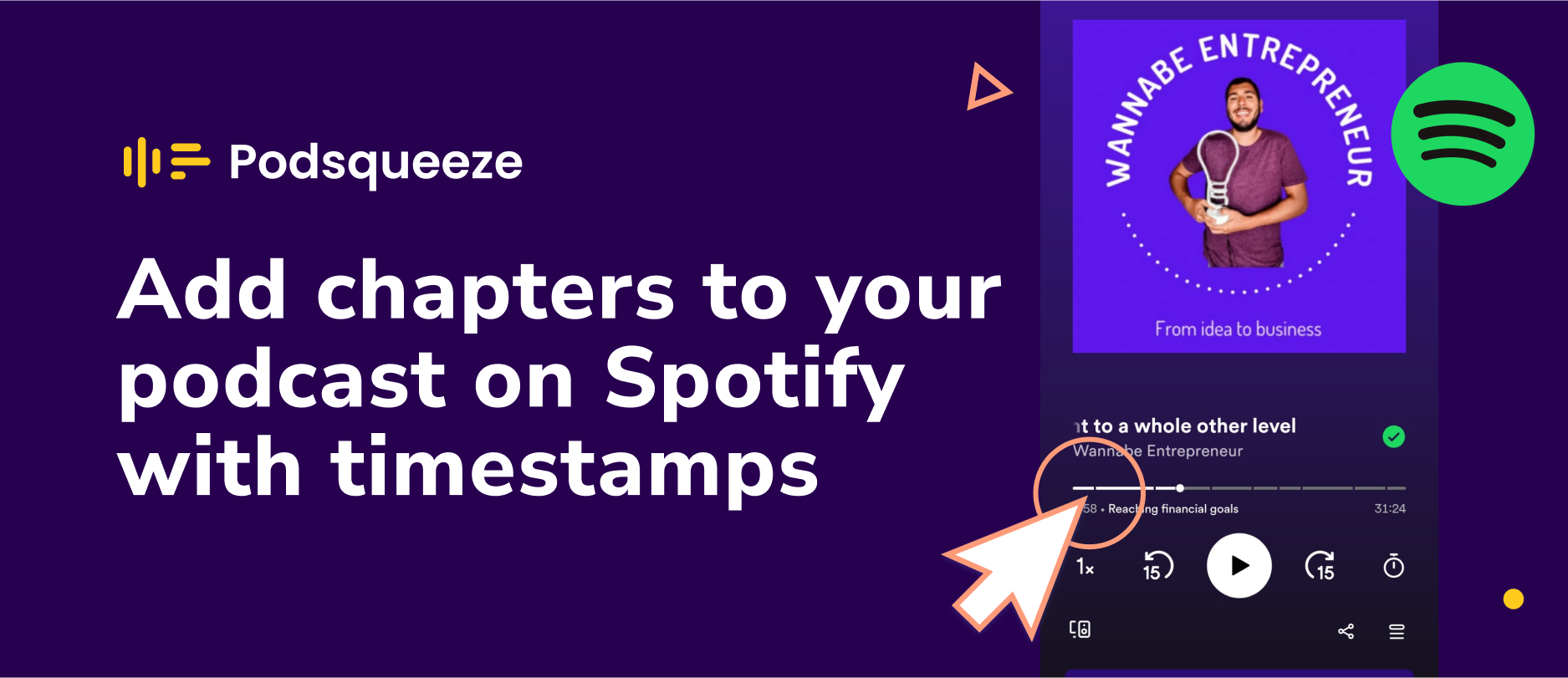BLOG ARTICLE
Add chapters to your podcast on Spotify with timestamps
Last updated: 12/22/2025
Last updated: 12/22/2025
Adding clickable chapter timestamps to your podcast episodes on Spotify can greatly enhance the listening experience for your audience. With the new player feature being rolled out on iOS and Android mobile apps as of January 2023, now is the perfect time to learn how to add this valuable feature to your episodes.

To get started, you'll need to add clickable timestamps in the episode description, which is very similar to the process used for YouTube. Simply include them in parentheses in your episode description and they'll automatically link.
You can use any of the following formats: (m:ss), (mm:ss), (mmm:ss), (h:mm:ss), (hh:mm:ss), or (hhh:mm:ss).
For example, (10:20) will automatically link to 10 minutes and 20 seconds into your episode.
You can also use a combination of timestamps to express a range, such as (hh:mm:ss-hh:mm:ss).
How to get timestamps for your podcast with using AI
Podsqueeze allows you to create a variety of content for your podcast, including timestamps, in just one click.
By analyzing your podcast audio, Podsqueeze automatically identifies the main chapters and their timestamps, and writes them in a ready-to-use format you can simply copy and paste into the episode description on Spotify. Spotify will then automatically link the timestamps generated by Podsqueeze to your episode.
Here is an example of chapters with timestamps Podsqueeze generated for a podcast episode:
The days before the internet [00:01:21] Tiago reflects on the times before the internet and computers, and how he used encyclopedias and attended a computer course during his childhood.
The rise of email [00:04:34] Tiago discusses the introduction of email and how it changed the world, allowing people to send letters in seconds.
Email as a crucial tool for Podsqueeze [00:09:45] Tiago talks about how email marketing is the main source for new customers for his current venture, Pod Squeeze, and how cold emailing can be effective with the right product.
Evolution of Cold Emailing [00:10:44] Tiago discusses the success of cold emailing and how he filtered a list of 5 million emails to 500,000. He also explains the recipe for a successful cold email.
Email Marketing and Spam [00:17:16] Tiago explains how email marketing works and how SMTP servers communicate with each other. He also discusses how email providers use public and internal lists to filter spam.
Reputation and Deliverability [00:20:34] Tiago explains how email providers use reputation to determine whether a message is spam or not. He also discusses how difficult it is to get off an internal list once you're on it.
And this is how they will automatically appear on your episode's player:

Read Next: How to Earn Money from Podcast Sponsorships
Repurpose your podcast content with AI